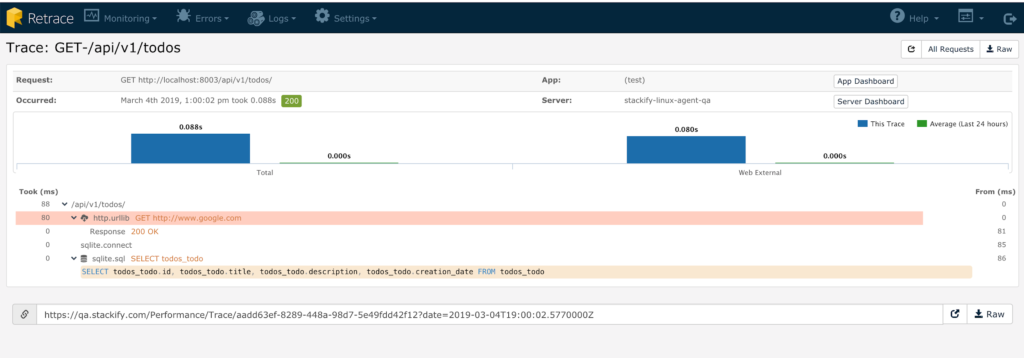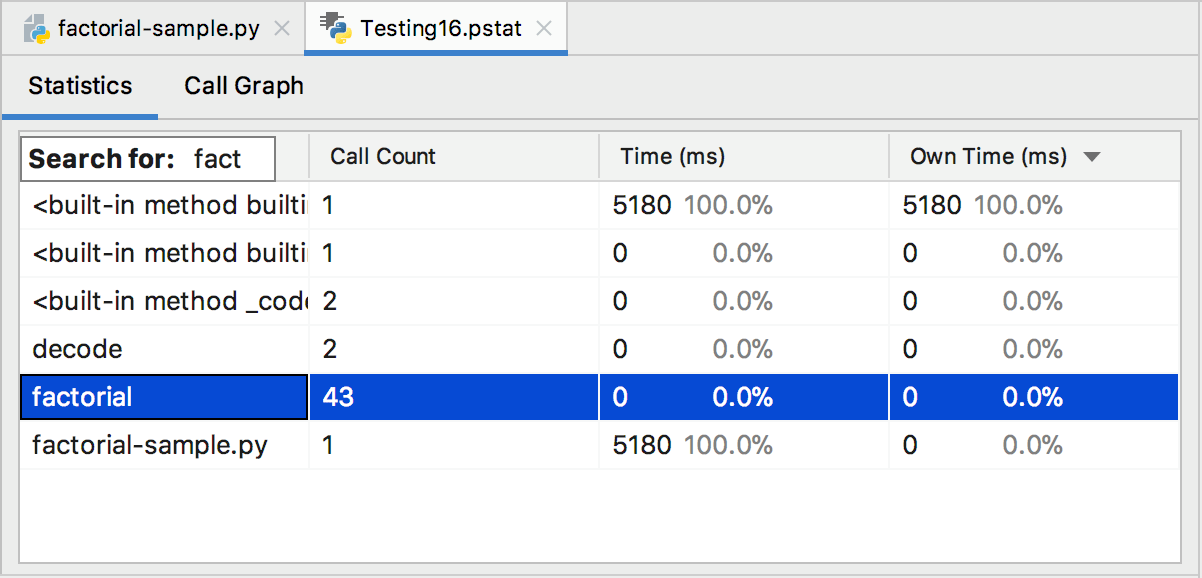

When more than one key is provided, then additional keys are used as The SortKey enums argument haveĪdvantage over the string argument in that it is more robust and less The argument can be either a string or a SortKeyĮnum identifying the basis of a sort (example: 'time', 'name', This method modifies the Stats object by sorting it according to On the profile.Profile and cProfile.Profile classes. This is equivalent to the method of the same name The file is created if it does not exist, and is overwritten Save the data loaded into the Stats object to a file namedįilename. Name) functions are automatically accumulated into single function

Statistics for identically named (re: file, line, To filenames created by the corresponding version of n() Information into the current profiling object. This method of the Stats class accumulates additional profiling Have the same function name), then the statistics for these two entriesĪre accumulated into a single entry. Indistinguishable (they are on the same line of the same filename, and If strip_dirs() causes two function names to be “random” order, as it was just after object initialization and loading. Strip operation, the object is considered to have its entries in a The object, and the stripped information is lost. The printout to fit within (close to) 80 columns. It is very useful in reducing the size of

This method for the Stats class removes all leading path Stats objects have the following methods: strip_dirs ( ) ¶ Or profile.Profile object can be used as the profile data source. Instead of reading the profile data from a file, a cProfile.Profile If additional files need to be combined with data in an Several files are provided, all the statistics for identical functions willīe coalesced, so that an overall view of several processes can be considered Profilers, or the same profiler run on a different operating system.

Profiler, and there is no compatibility with files produced by other There is no file compatibility guaranteed with future versions of this The file selected by the above constructor must have been created by theĬorresponding version of profile or cProfile. Will be printed to the stream specified by stream. This class constructor creates an instance of a “statistics object” from aįilename (or list of filenames) or from a Profile instance. Stats ( *filenames or profile, stream=sys.stdout ) ¶ Results to a file by specifying a filename to the run() function:Īnalysis of the profiler data is done using the Stats class. Instead of printing the output at the end of the profile run, you can save the Not recurse, these two values are the same, and only the single figure is The second value is the number of primitive callsĪnd the former is the total number of calls. When there are two numbers in the first column (for example 3/1), it means Provides the respective data of each function Is the quotient of cumtime divided by primitive calls filename:lineno(function) This figure is accurate even for recursive functions. Is the cumulative time spent in this and all subfunctions (from invocation Is the quotient of tottime divided by ncalls cumtime The column headings include: ncallsįor the total time spent in the given function (and excluding time made in Next line: Ordered by: standard name, indicates that the text string in theįar right column was used to sort the output. Were primitive, meaning that the call was not induced via recursion. The first line indicates that 197 calls were monitored. 197 function calls ( 192 primitive calls ) in 0.002 seconds Ordered by : standard name ncalls tottime percall cumtime percall filename : lineno ( function ) 1 0.000 0.000 0.001 0.001 : 1 ( ) 1 0.000 0.000 0.001 0.001 re.


 0 kommentar(er)
0 kommentar(er)
